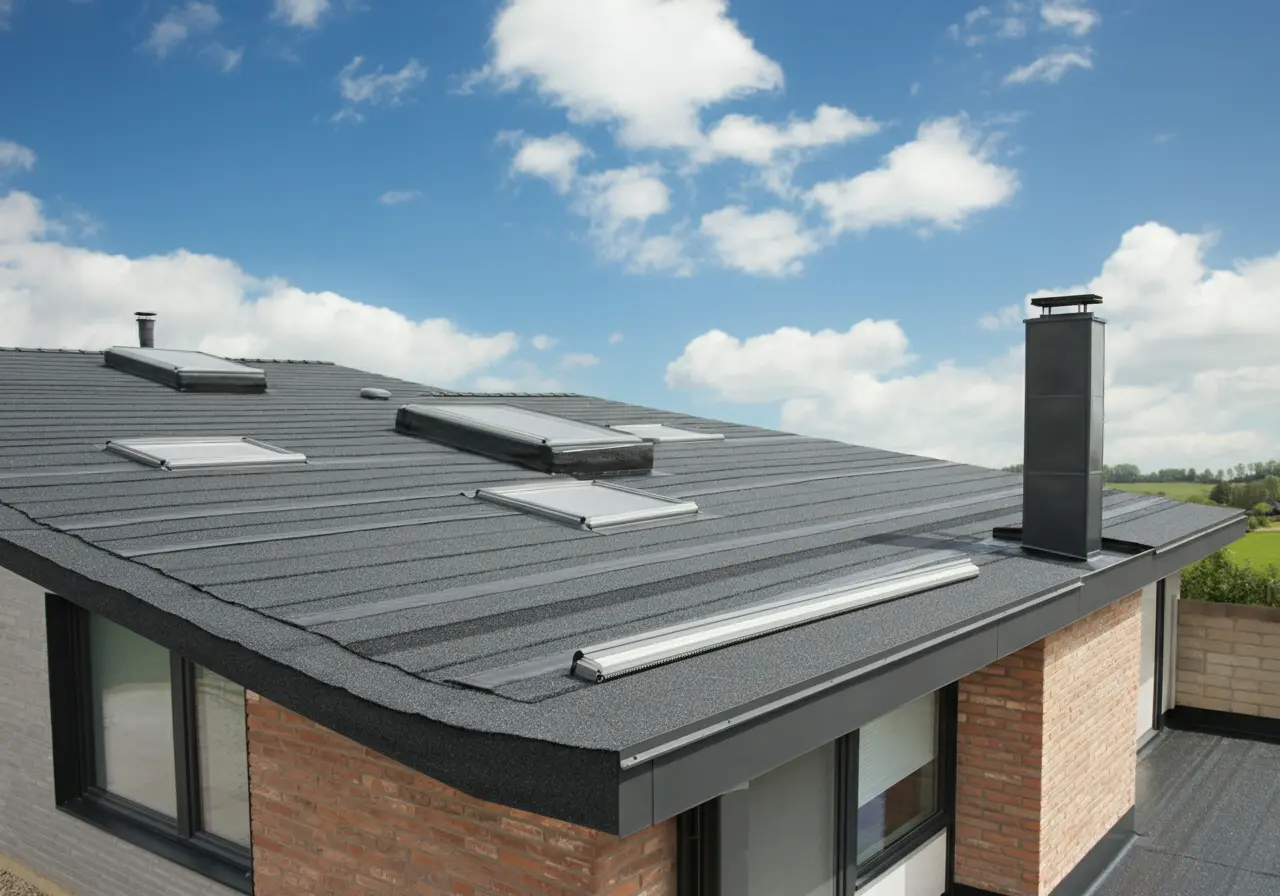Choosing the right roofing material can feel overwhelming, especially when you’re balancing durability, cost, and weather resistance. Whether you’re a homeowner facing roof repairs or a contractor seeking reliable solutions for clients, the options seem endless. But what if there was a roofing material that combines exceptional weather protection with cost-effectiveness and easy installation?
Enter acryldach—a modern roofing solution that’s gaining traction across the UK. This innovative roof coating offers impressive durability while remaining accessible to both DIY enthusiasts and professional installers. From its seamless application to its ability to withstand Britain’s unpredictable weather, acryldach presents compelling advantages for various roofing projects.
This comprehensive guide explores everything you need to know about acryldach, from its core benefits and applications to installation requirements and potential drawbacks. You’ll discover whether this roofing material aligns with your specific needs and budget, plus learn about alternative options worth considering.
What is Acryldach?
Acryldach is a liquid-applied roofing system that creates a seamless, waterproof membrane when cured. This innovative roofing material consists primarily of acrylic polymers combined with specialized additives that enhance its performance characteristics. Unlike traditional roofing materials that come in sheets or tiles, acryldach is applied as a liquid coating that conforms to any roof surface.
The material works by forming a flexible, rubber-like membrane that expands and contracts with temperature changes. This elasticity prevents cracking and splitting that commonly plague rigid roofing materials. Once applied, acryldach typically cures within hours, depending on weather conditions and coating thickness.
Acryldach is particularly popular for flat roofs, low-pitched roofs, and complex roof shapes where traditional materials might create weak points or joints. Its ability to flow into corners, around penetrations, and over irregular surfaces makes it an excellent choice for challenging roofing applications.
Benefits of Acryldach
The advantages of acryldach extend far beyond its liquid application method. This roofing material offers several compelling benefits that make it attractive to both homeowners and contractors.
Superior Weather Resistance
Acryldach excels in the UK’s variable climate. Its seamless membrane eliminates the weak points found in traditional roofing systems, such as seams, joints, and overlaps where water typically penetrates. The material resists UV radiation, preventing the degradation that affects many roofing materials over time.
Exceptional Flexibility
Temperature fluctuations cause roofing materials to expand and contract. Acryldach’s flexible nature accommodates this movement without cracking or losing adhesion. This flexibility proves especially valuable during freeze-thaw cycles common in British winters.
Energy Efficiency
Many acryldach formulations feature reflective properties that reduce heat absorption. This characteristic can lower cooling costs during summer months and contribute to more stable indoor temperatures year-round.
Quick Application
Professional installers can apply acryldach relatively quickly compared to traditional roofing systems. The liquid application eliminates the time-consuming process of measuring, cutting, and positioning individual roofing components.
Uses of Acryldach
Acryldach serves multiple roofing applications, making it a versatile choice for various building types and situations.
Flat Roof Systems
Commercial buildings, residential extensions, and garage roofs benefit from acryldach’s seamless coverage. The material easily handles the ponding water that often challenges flat roof installations.
Roof Repairs and Renovations
Rather than complete roof replacement, acryldach can restore aging roofing systems. It adheres well to most existing roofing materials, including modified bitumen, EPDM, and metal roofing.
Complex Roof Geometries
Buildings with multiple roof levels, dormers, or architectural features present challenges for traditional roofing materials. Acryldach flows around these obstacles, creating continuous protection without complicated flashing details.
Emergency Repairs
When roof leaks require immediate attention, acryldach provides a rapid solution. Its quick curing time makes it ideal for urgent repairs that cannot wait for scheduled roof replacement.
Drawbacks of Acryldach
Despite its advantages, acryldach has limitations that potential users should understand.
Weather-Dependent Installation
Acryldach application requires specific weather conditions. Rain, high humidity, or temperatures outside the manufacturer’s recommended range can compromise the curing process and final performance. This limitation can extend project timelines, particularly during Britain’s wet seasons.
Surface Preparation Requirements
Successful acryldach installation demands thorough surface preparation. The substrate must be clean, dry, and properly primed. Inadequate preparation can lead to adhesion failures and premature system failure.
Limited Aesthetic Options
While acryldach comes in various colors, it cannot replicate the appearance of traditional roofing materials like slate or clay tiles. This limitation may concern homeowners prioritizing architectural aesthetics.
Skill-Dependent Results
Although acryldach seems straightforward to apply, achieving optimal results requires experience and attention to detail. Improper application techniques can create thin spots, holidays, or other defects that compromise performance.
Acryldach: Cost
Understanding acryldach costs involves considering both material expenses and installation factors.
Material costs for acryldach typically range from £3 to £8 per square meter, depending on the specific formulation and coverage rate. Premium systems with enhanced features command higher prices, while basic formulations remain more affordable.
Labor costs vary significantly based on roof complexity, surface preparation requirements, and local market rates. Professional installation generally adds £10 to £20 per square meter to the total project cost.
Additional expenses may include primer, reinforcing fabrics for critical areas, and specialized application equipment. These supplementary materials can add 20-30% to the base material cost.
When compared to traditional roofing systems, acryldach often proves cost-competitive, especially for complex roof shapes or repair applications where traditional materials would require extensive customization.
Acryldach: Installation
Proper installation determines acryldach system performance and longevity. The process involves several critical steps that require careful attention to detail.
Surface Preparation
The existing roof surface must be thoroughly cleaned and inspected. Loose materials, dirt, and contaminants need removal. Any structural defects require repair before coating application.
Primer Application
Most acryldach systems require primer application to ensure proper adhesion. The primer must cure completely before coating application, typically requiring 2-4 hours under favorable conditions.
Base Coat Application
The first acryldach coat goes on using spray equipment, rollers, or brushes, depending on the specific product and roof conditions. Maintaining consistent thickness across the entire surface proves crucial for uniform performance.
Reinforcement Installation
Critical areas such as roof drains, penetrations, and perimeter details often require reinforcing fabric embedded in the base coat. This reinforcement prevents stress concentrations that could lead to premature failure.
Top Coat Application
The final coating layer provides the primary weather protection and aesthetic finish. Some systems require multiple top coats to achieve the specified dry film thickness.
Acryldach: Maintenance
Regular maintenance extends acryldach system life and maintains optimal performance.
Annual Inspections
Homeowners should inspect their acryldach roof annually, preferably in spring and fall. Look for signs of wear, cracking, or areas where the coating appears thin.
Debris Removal
Keep the roof surface free from leaves, branches, and other debris that can retain moisture and promote deterioration. Regular cleaning prevents organic growth that can compromise the coating.
Prompt Repairs
Address any damage immediately to prevent water infiltration. Small damaged areas can often be repaired with additional coating material, avoiding extensive system replacement.
Professional Assessment
Schedule professional inspections every 3-5 years to assess overall system condition and identify potential issues before they become major problems.
Is Acryldach Right for You?
Determining whether acryldach suits your specific situation requires evaluating several factors.
Consider acryldach if you have a flat or low-slope roof, need a cost-effective repair solution, or face challenging roof geometry. The material works particularly well for commercial buildings, residential extensions, and structures where traditional materials prove difficult to install.
Avoid acryldach if you prioritize traditional roofing aesthetics, live in an area with frequent severe weather during installation season, or lack access to experienced installers. The material may also prove unsuitable for roofs with significant structural issues that require more extensive repairs.
Budget constraints often influence roofing material selection. Acryldach typically costs less than premium traditional materials but more than basic asphalt shingles. Consider long-term maintenance costs and expected system life when making comparisons.
Acryldach Alternatives
Several roofing materials compete with acryldach in similar applications.
EPDM Membrane
Single-ply rubber membranes offer excellent durability and proven performance. However, they require more complex installation and create seams that can become failure points.
Modified Bitumen
These multi-layer systems provide reliable performance at competitive costs. Installation typically takes longer than acryldach, and the systems have more seams and potential leak points.
Metal Roofing
Standing seam metal roofs offer exceptional longevity and aesthetic appeal. However, they cost significantly more than acryldach and require specialized installation skills.
TPO Membrane
Thermoplastic single-ply membranes combine durability with energy efficiency. Like EPDM, they create seams that require careful installation and maintenance.
Making the Right Roofing Choice
Acryldach represents a compelling option for many roofing applications, particularly those involving flat roofs, complex geometries, or repair situations. Its seamless application, weather resistance, and cost-effectiveness make it attractive to both homeowners and contractors seeking reliable performance.
The material’s limitations—primarily weather-dependent installation and aesthetic constraints—may preclude its use in certain situations. However, for appropriate applications, acryldach delivers excellent value and performance.
Before making your final decision, consult with experienced roofing professionals who can assess your specific situation and recommend the most suitable materials and installation approaches. A well-informed choice today ensures years of reliable roof performance and protection for your property.
Discover the prime mixed-use development at Savarin Prague, featuring anchor tenants like TimeOut Market and CHANEL, set to open in 2029.


